Write: Monica Uriel. Journalist
Ecuador, leader in the international market of banana tree and second exporter of shrimp in the world, now bet on transforming the cocoa, which it sells as a private label, in chocolate. Always own and of quality, a path that also begins to travel the coffee. These products, in a country with large expanses of fertile land, water and a very conducive climate for many crops, they will join the high quality standards of the tourism in its Galapagos islands. Discover the chocolate and coffee from Ecuador below.
En Galapagos It is not necessary to dive with compressed air bottles to contemplate its fauna, but the snorkeling is enough to swim with giant turtles, sea lions, sharks and penguins following the path of the starfish. A very relaxed way of doing it is on board the only motor catamarans on the islands, those of the company Nemo. On cruises you can taste excellent cuisine with dishes such as ceviche and tuna.
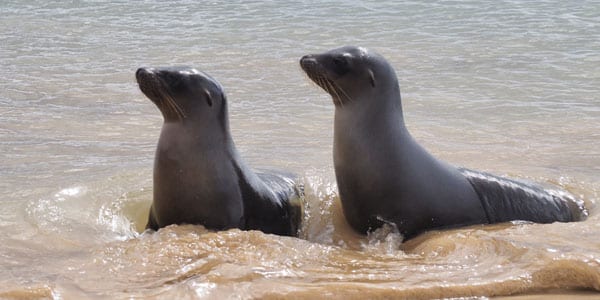
Galapagos, interesting on land and sea
On land you can continue enjoying the gastronomic offer in Puerto Ayora (Isla de Santa Cruz), in the street of the kiosks. It is full of food stalls with dishes such as Locust, the octopus, the corvinas al grill or the classic tuna with onion. There is much more to the chocolate and coffee from Ecuador
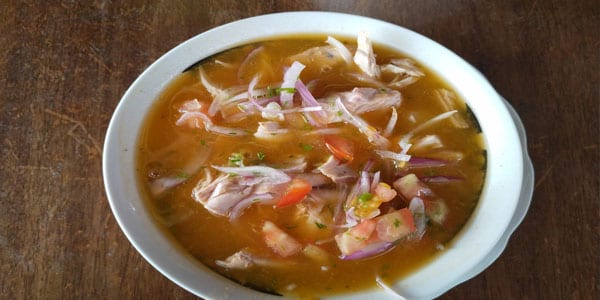
The coffee of Galapagos has just acquired the Denomination of Origin, the first to receive it from Ecuador. The president of the coffee growers cooperative, Thorbaldo Kastalen, now hopes to export quality coffee and that its volcanic soil peculiarities will not be mixed with others. Thorbaldo is satisfied for the moment with selling it on parchment, that is, without toasting but differentiating itself from the rest.

Visiting a coffee plantation
The farm of Lava Java coffee, In the Island of Santa Cruz, was the first that began to make visits. La Lava Java farm it follows organic cultivation and markets roasted coffee under its own brand. For now, its commercialization points are the island itself and continental Ecuador, but it continues looking for places of sale that know how to appreciate the Galapagos coffee.
The first craft beer in Galapagos begins to make visits to your factory now, Santa Cruz, with a growing production of 2.500 liters per month. In his brewery of Puerto Ayora you can taste some of its 19 types of beer such as Ales, Stouts and some Lager.
Between mountains, Quito
Quito it has a magnificent old town, Unesco World Heritage. In the 250th century convent of San Francisco, you can see ancient traces of the brewing tradition. His XNUMX Franciscan monks turned the bakery into a brewery. Initially only for internal consumption. They took beer at lunch and dinner. They stopped manufacturing in the 70s and have just reopened a museum for visitors.
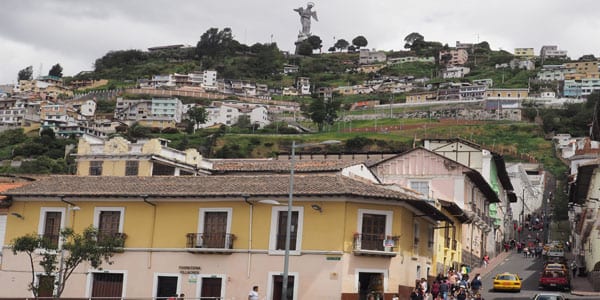
About 200 kilometers from Quito, In the Amazon, we enter the world of Ecuadorian cocoa with the chocolate tour boyfriend visiting the community of Santa Rita. There we visit a plantation of fine aroma cocoa where you can harvest the fresh pods. Later, the visitor makes their own artisan chocolate by roasting, peeling and grinding the cocoa, and mixing it with panela, ishpingo and cinnamon.
The quality chocolate and coffee from Ecuador
boyfriend it works directly with small-scale farmers and not with intermediaries. Pay a price significantly higher on market prices. Thus, producers receive the right price and can continue with their sustainable farming methods. In Quito, In the Floresta neighborhood, Pacari has just opened his own store. There it offers all its products.
Five generations have been producing cocoa in San Jose, in the province of Los Ríos, about 70 kilometers from Guayaquil. They are now preparing to turn the farm into the first chocolate factory in Ecuador. This magnificent cocoa farm has 400 hectares of cocoa and another 400 of bananas. They say that cocoa absorbs the flavor of what is next to it, the banana in this case.
It takes 120 to 150 days for the ear to be harvested, with an average of 40 ears per year per tree. The harvested cocoa is passed to a mesh, where the slime weeps before pre-drying and fermentation. This is a process that takes a week in total. Ecuador's chocolate and coffee they manage to obtain an excellent quality.

When grinding, it will arrive with 2% humidity. It is roasted, cooled, crushed and with the powder it becomes a liquid that is 100% cocoa. This cocoa liquor can be tasted when the farm begins to make visits in the coming months. The visitor will be welcomed with an exquisite cocoa juice, a juice that should be taken freshly made, as it oxidizes quickly. It is the fruit of the pulp that surrounds the cocoa nuggets on the cob.
A rich and diverse gastronomy
The gastronomy of Guayaquil is famous for its crabs, which are captured in the mangroves of the provinces of Guayas and El Oro. They can be tasted in the restaurant with a long tradition Red Crab, in the Urdesa neighborhood, where they will provide a wooden hammer. This is to be done with the meat of the crustacean. You can see crabs in the Los Sauces IX Market, where they are sold by the dozen.
The place is highly recommended to have breakfast its famous shells (clams) and ceviche. That's where they buy the great chefs from the city. In the stalls there is a great variety of fish with its famous shrimp classified by size and with or without shell.
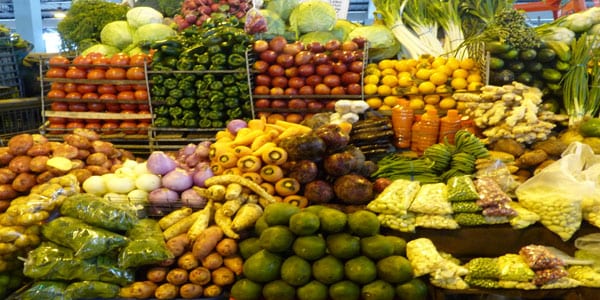
The only winery in Ecuador
Without leaving the province of Guayas, riding a San Miguel del Morro, is the only winery of quality wine with two harvests a year in a country like this. The two hemispheres meet and there are only two seasons (one wet and one dry). Here the temperature varies a maximum of 14 degrees and the climate is maritime with the influence of the Humboldt current. One harvest is in October, with the highest production, and the other in June. Due to the continuous activity in 38 hectares of crops, there are up to 90 people working at the same time.
Located 15 kilometers from the sea, in limestone soils with marine fossils, the winery Two hemispheres, who accepts arranged visits, challenged the belief that wine could only be harvested with four climatic seasons and in places in other latitudes. The name of his first wine, in 2006, responds to this challenge: the red Paradoja, followed by Bruma and Del Morro, and the white Enigma (Chardonnay, the only one where the two vintages are mixed), and finally Travesía.
The possibility that the winery has denomination of origin for its peculiar place of elaboration. The grape Cabernet it is the most abundant among others such as Malbec, Pinot Noir, Chardonnay, Shiraz, Merlot and Sauvignon Blanc. The winery is now beginning to test other varieties such as Tempranillo. This is one more sample that there is more than the chocolate and coffee from Ecuador.
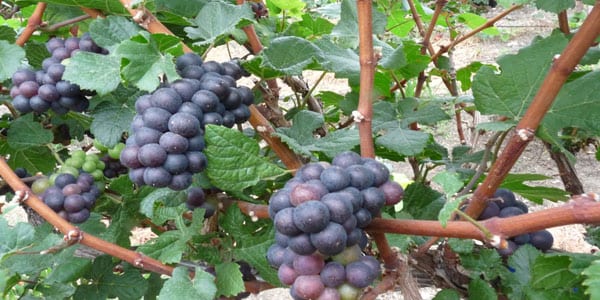
Cuenca, beautiful colonial city
We leave Guayaquil to go to the beautiful Cuenca, a city crossed by four rivers and which has 60 churches, so every Sunday of the year you can go to mass at a different one. It is the center of many artisan traditions, among which the toquilla straw hats. They are known internationally as Panama hats, which were already used by the aborigines to protect themselves from the sun. The construction of the canal caused a great demand among its workers for this hat and people began to call it “Panama Hat”. Although its place of origin is Ecuador.
In the 40s, when it employed 250.000 people, this hat became number one in the country's exports, ahead of the banana and prawns. Now there are 10.000 hat weavers who take 8 hours to make one and, with the finest thread, they can last up to 5 months. You can see how they are woven in Homer Ortega, a company that has been making these hats for five generations and whose factory can be visited in Cuenca.

After strolling through the streets and squares of Cuenca, you can eat baked pork in the Market August 10 and more elaborate food in the restaurant The market.
Quito and its interior gastronomy
En Quito a restaurant specializing in pork is Salnés Picanteria, by chef Marcelo Acuña, who worked on El Bulli with Ferrán Adriá. Marcelo buys many of the organic products from retailers and the ceramic dishes have been made by indigenous people from the Amazon. Cook the ear, head, leg and rib of the pig, either lacquered, smoked or cooked. The pork tenderloin is accompanied by achote and also offers red and white blood sausage.
It even makes combinations like blackberry peppers. Marcelo considers that Ecuadorian cuisine is the one that has the closest proximity to Spanish of all Latin America. Yes, of the chocolate and coffee from Ecuador it does not speak of comparisons because there are none.

To have a coffee after lunch in Quito, several coffee shops are placing the quality product made in Ecuadoras The Barista, opened two years ago. As with cocoa, this small country with great potential "exports coffee under private label although it is gradually positioning itself internationally," he tells us. Valeria jaramillo, one of the partners of The Barista. They work with Arabica coffee - in Ecuador there is little Robusta - from the Intag Valley, in Imbabura, at an altitude of 1.550 meters.
"The taste of coffee from Ecuador has nothing to envy that of Colombia," he tells us. Valeria, which highlights that here the four seasons can occur in one day, and that there is not such an intense winter and heat. Among the specialties that can be taken in The bartender, which has the Italian machine in view so you can see how they do it, there is a coffee with hazelnut cream served accompanied by strawberries.
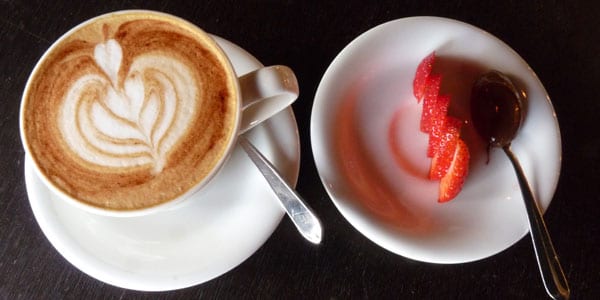
Around Quito you can visit the Half of the world and put one foot in each hemisphere. It was here that in the eighteenth century measurements were made that showed that the equatorial line passed through this place. A complete museum of cocoa reviews the history of the production of this product in the country.
Following that road you will arrive at Mindo, a small town surrounded by forests turned into a goal of ornithologists. In addition to contemplating butterflies, hummingbirds and also orchids, the town gives off the smell of chocolate and coffee from Ecuador. Like the one they make in yumbos, where they teach their elaboration process.
To end the trip another recommended excursion in the surroundings of Quito es Papallacta, at 3.300 meters of altitude and whose open-air hot springs are the best spa in the country. After this, it is recommended to eat trout, typical dish of the area.






